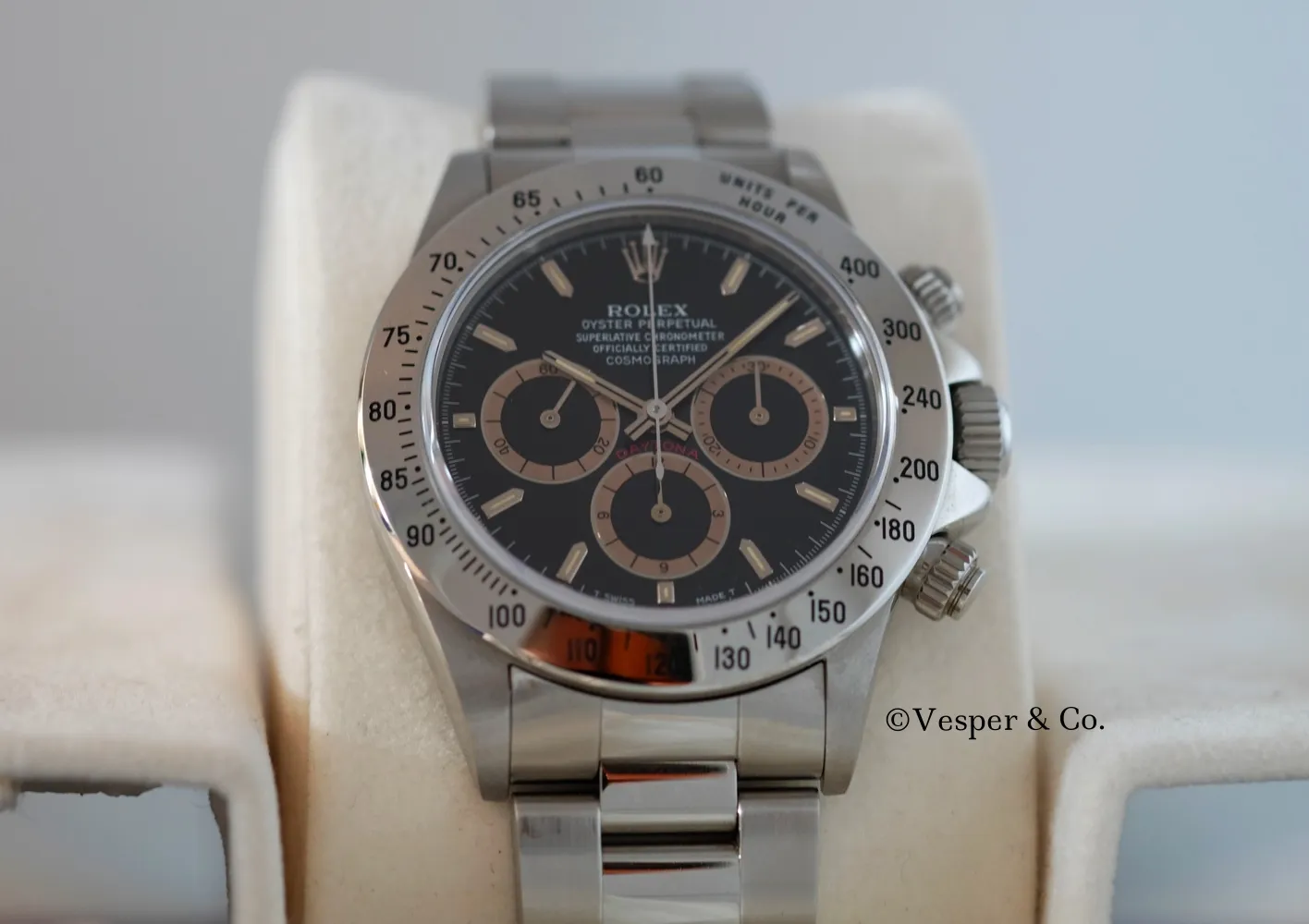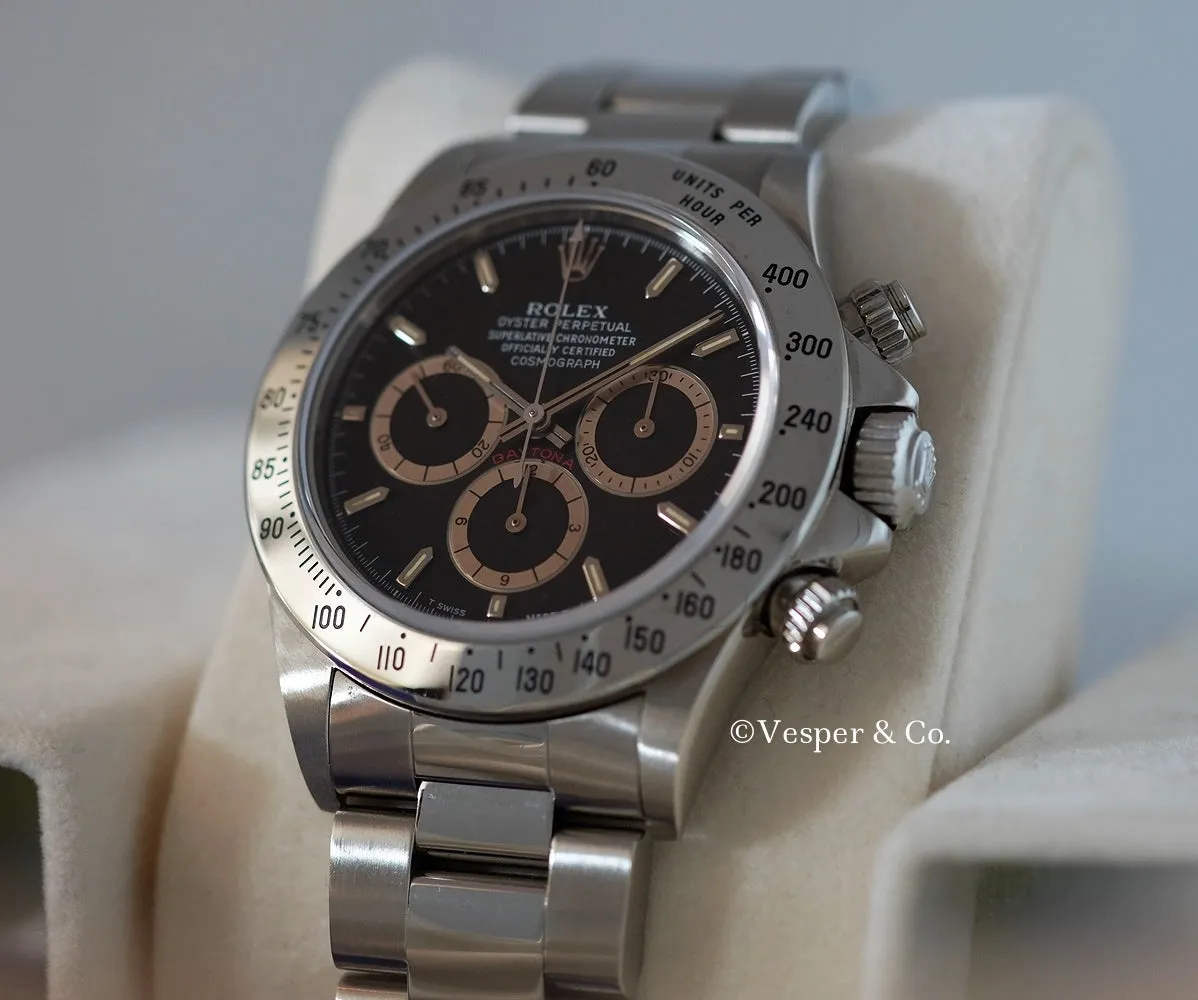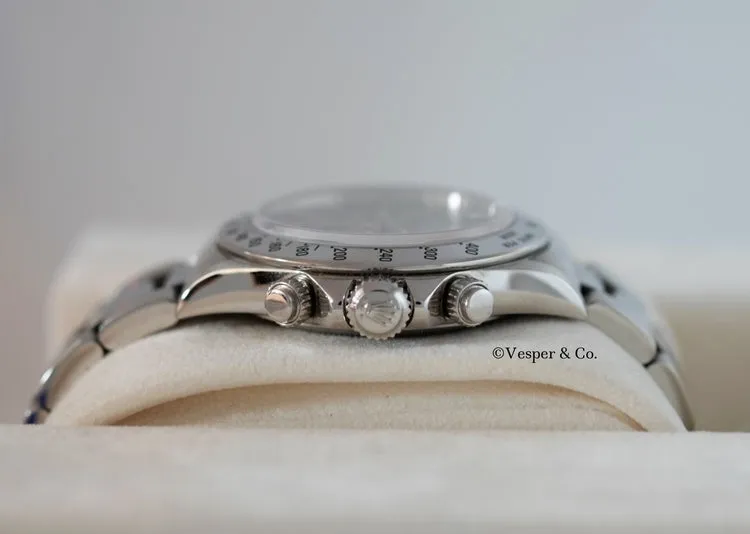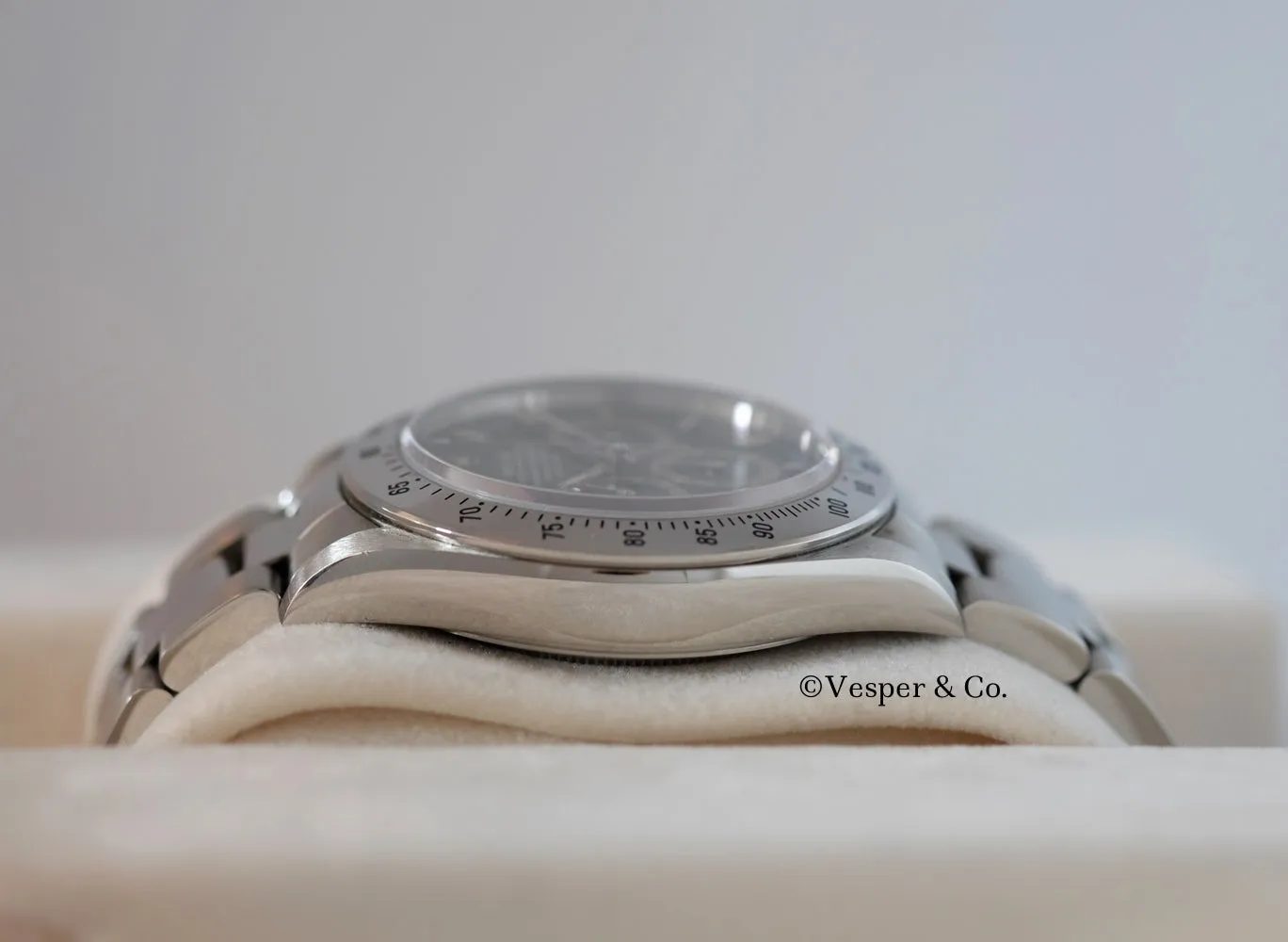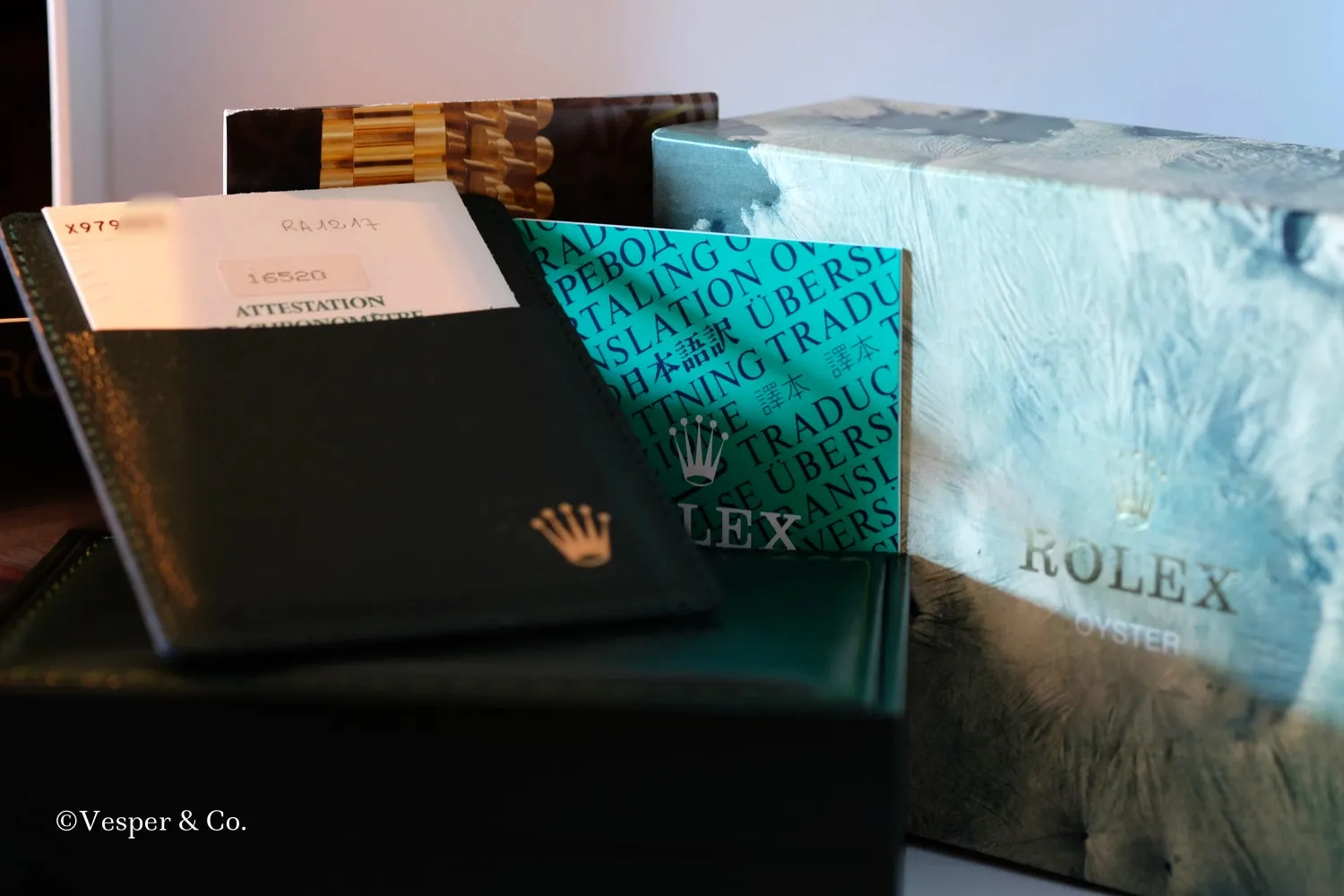The Rolex Daytona had been in production for over twenty years with a manual-winding movement when in 1988, the firm introduced the reference 16520, the first Daytona model to be fitted with an automatic movement. For this movement, Rolex used the base of Zenith El Primero movement, but removed half of the parts. Starting with the Zenith caliber 400, Rolex eliminated the date function, reduced the balance’s oscillation rate (so the movement would require less frequent servicing), and added a new escapement that included a larger free-sprung balance and balance spring (a move that was more costly but would also be more accurate). The final result was the Rolex caliber 4030, used in modern Daytonas until 2000, at which time Rolex introduced the reference 116520 with the new and fully in-house caliber 4130.
Within the 16520 model range, the dials on certain series underwent a transformation due to oxidation – the chapter rings outside of the subsidiary dials changed color from white to a shade of brown. This color change occurring on watches produced in the early 1990's in the W, S, T and X serial range, and it is important to note that these watches must also have the upside down “6” digit on the 12 hour register. Watches with this feature are known as “Compax Marrone” or “Brown Compax”.
Some watches will age in such a way that the dial, or parts of the dial turn a completely different shade, often in the brown family. Consequently, watches with these color-change, or “tropical” dials, have become very desirable to collectors. In some instances, the color-change goes hand in hand with a small production run. When the manufacturers realized there was an issue with a material used on the dial, for example the type of lacquer used, they would switch to a different type of material. Watches that were produced in limited quantities appeal to collectors for their rarity, so even with what some may see as an unattractive trait, these pieces will be in demand. Having been produced for such a short period of time, and not knowing at the time of production that this color change would happen, examples of these “Brown Compax” dials are highly sought-after.

